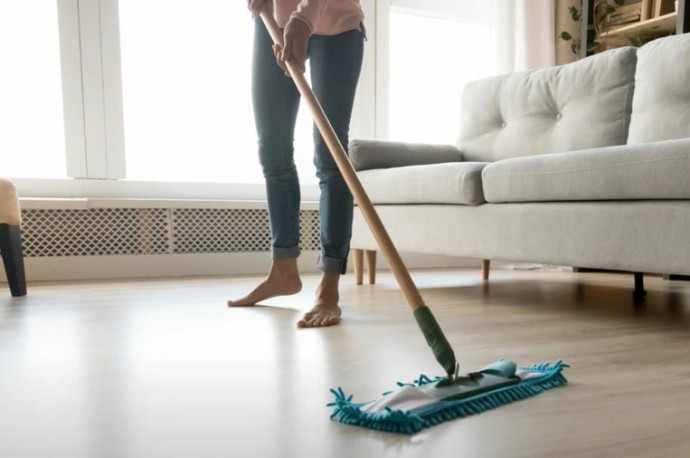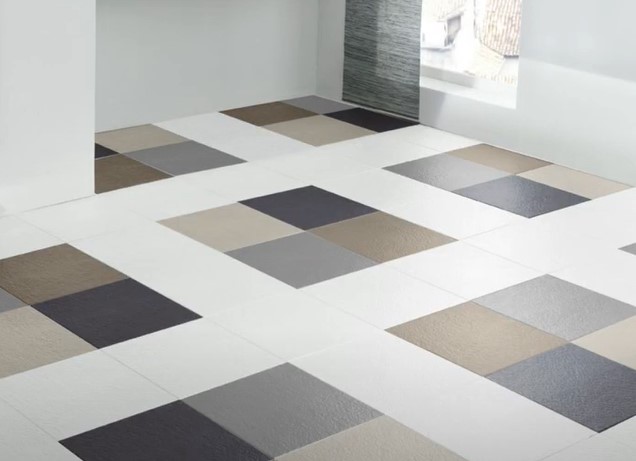Are you frustrated with your linoleum floor still looking dirty after mopping? Don’t worry; you’re not alone in this predicament. Many people encounter this common issue and wonder why their efforts aren’t yielding the desired results.
In this guide, we’ll explore the various reasons behind your perpetually dirty linoleum floor and provide practical solutions to restore its cleanliness. So, let’s dive in and uncover the dirty truth!

Table of Contents
Why Is My Linoleum Floor Still Dirty After Mopping?
Despite your sincere mopping endeavors, your linoleum floor continues to harbor dirt and grime. Let’s delve into the possible causes and potential remedies.
1. Insufficient Cleaning Technique
Mopping, like any other cleaning task, requires the right technique for optimal results. Merely swishing a wet mop across your linoleum surface won’t suffice. Ensure you’re employing the correct method to remove stubborn dirt effectively.
To achieve a pristine linoleum floor, follow these steps:
- Sweep or vacuum the floor to eliminate loose debris.
- Dilute a pH-neutral floor cleaner in warm water according to the manufacturer’s instructions.
- Dip your mop into the cleaning solution and wring it out thoroughly.
- Mop the floor using gentle, overlapping strokes.
- Rinse and wring out the mop frequently to avoid spreading dirt.
- Change the cleaning solution if it becomes visibly dirty.
- Allow the floor to air dry or use a clean, dry mop to speed up the process.
2. Using Dirty Mop Water
Imagine trying to clean a dirty surface with dirty water – it’s an exercise in futility! Similarly, using dirty mop water can contribute to the persistently dirty state of your linoleum floor. Avoid this by regularly refreshing the mop water during the cleaning process.
3. Inadequate Pre-Mopping Preparation
Preparation is key to a successful cleaning endeavor. Neglecting to prepare your linoleum floor adequately before mopping can lead to lackluster results. Take the following steps to ensure thorough pre-mopping preparation:
Remove furniture or obstacles to facilitate unrestricted access to the entire floor area.
Address any spills or stains promptly to prevent them from setting and becoming more challenging to remove later.
Sweep or vacuum the floor to eliminate loose dirt and debris before mopping.
Also read more: Best Mop to clean Linoleum Floors
4. Using the Wrong Cleaning Products
The type of cleaning product you use on your linoleum floor can significantly impact its cleanliness. Some floor cleaners contain harsh chemicals that can leave behind residue or damage the linoleum surface. To avoid this, opt for pH-neutral, non-abrasive cleaners specifically designed for linoleum floors.
5. Insufficient Drying Time
Rushing the drying process can sabotage your cleaning efforts. When you mop your linoleum floor, it’s essential to allow adequate time for it to dry completely. Failing to do so may result in dirt particles from shoes or pets being trapped in the residual moisture, leading to a perpetually dirty appearance.
6. Worn or Damaged Sealant
A worn or damaged sealant on your linoleum floor can compromise its resistance to dirt and stains. Over time, the protective layer may wear off, leaving the floor vulnerable to grime accumulation. Consider resealing your linoleum floor to restore its luster and make it easier to clean.
FAQs

To further address your concerns, here are some frequently asked questions about dirty linoleum floors:
Why does my linoleum floor attract dirt so easily?
The porous nature of linoleum makes it prone to attracting and retaining dirt particles. Regular sweeping and proper cleaning techniques can help minimize dirt accumulation.
Can I use vinegar to clean my linoleum floor?
Yes, vinegar can be an effective natural cleaner for linoleum floors. However, it’s important to dilute it properly and avoid using it on waxed or sealed linoleum surfaces.
How often should I clean my linoleum floor?
Regular cleaning is essential for maintaining a clean linoleum floor. Aim to sweep or vacuum daily and mop once or twice a week, depending on foot traffic and overall dirt accumulation.
Can linoleum floors be waxed?
Yes, linoleum floors can be waxed to enhance their appearance and provide an extra layer of protection. Follow the manufacturer’s instructions and use a wax specifically designed for linoleum surfaces.
Are there any preventive measures to keep my linoleum floor cleaner for longer?
Yes, there are several preventive measures you can take:
- Place doormats at entrances to trap dirt and moisture from shoes.
- Use furniture pads to prevent scratches and dents.
- Promptly clean up spills to prevent staining.
Conclusion
If you’ve ever wondered, “Why is my linoleum floor still dirty after mopping?” now you have the answers. By ensuring proper cleaning techniques, using the right products, and addressing potential issues like worn sealants, you can achieve a cleaner and more appealing linoleum floor.
Remember to give your linoleum floor the attention it deserves, and it will reward you with its natural beauty.
So, don’t let the mystery of dirty linoleum floors linger any longer – take action and restore your floor’s cleanliness today!
